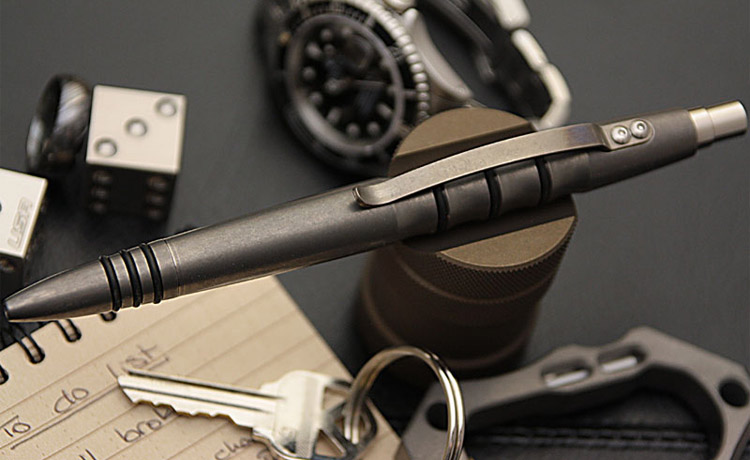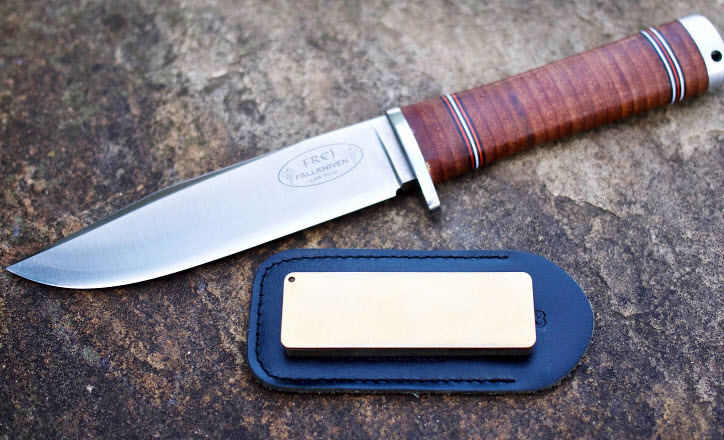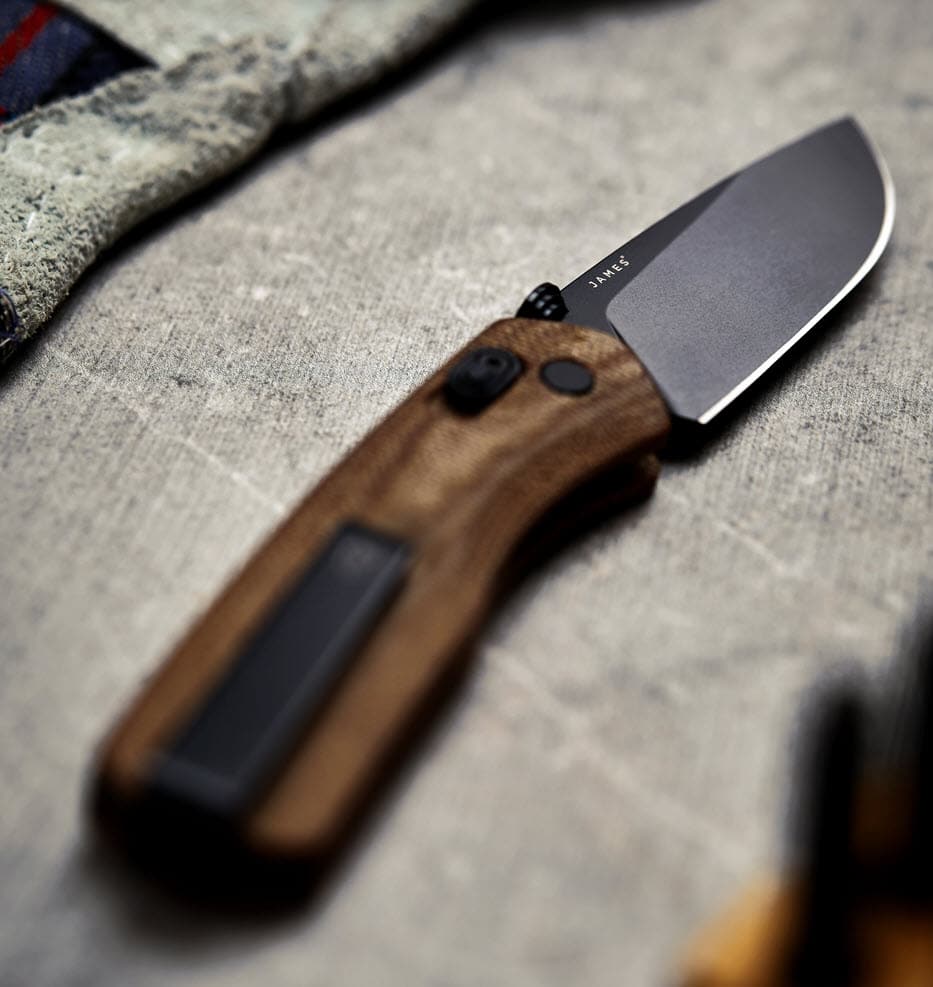
No matter if you’re using a knife in the kitchen or for your own protection as you’re a military (or Law Enforcement and anything related)- for whatever the reasons you’re using a knife, you know that you may have to sharpen it sooner or later.
Using a dull knife in the kitchen may not be a tragedy (even if this doesn’t make it less dangerous), you sure want to have your tactical knife sharp at all time. Not only that a proper sharpening is going to expand the durability of your tactical knife, but it’s also going to help you know that you can rely on it in any life-threatening situation.
The fastest, smallest, cheapest and simplest way to sharpen your knife is to use a pull-through sharpener. By all means, some sandpaper, cardboard or even a car window may work at times, but you shouldn’t skip a proper sharpening session of your knife any now and then.
Page Contents
What counts when sharpening your knife?
Even though it seems easy, the proper sharpening of your knife depends on several aspects. Let’s take a closer look at each of them:
The angle
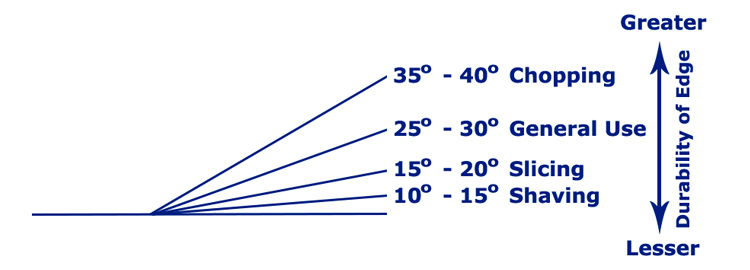
The angle of the knife to the sharpening surface is one thing to consider when sharpening. The angles of knives may range from 10 to 30 degrees (and even bigger than that). Some think that 15-20degrees on each side is a good number, as it results into a 30-60degree angle cutting edge.
There are several ways to identify the angle you’re at while sharpening and you’re going to be able to appreciate just by holding the knife after some long time practice. Here are some suggestions:
- Fold a small, square piece of paper in half diagonally, which gives you a 45degree angle. Continue by folding it in half diagonally once again, which gives you a 22.5-degree angle. Place the paper under the edge and make adjustments you need. The paper is only there for guidance as you’re trying to give your hands and brain an angle to remember when you’re sharpening the blade.
- Place two pennies under the spine of the blade for obtaining 15-20-degree angle (this is for most pocket knives). Remove the pennies before sharpening the knife, but place the knife up on the coins so that you make an idea about the angle as you’re sharpening. Take the pennies off the stone and continue sharpening the knife, putting the pennies back every time you need a check.
- A matchbox can be an easy trick to use. It’s going to give you a 12-15-degree angle (which is fine for a finer edge)- a good one for a filleting knife, just to give you an example.
Remove the steel
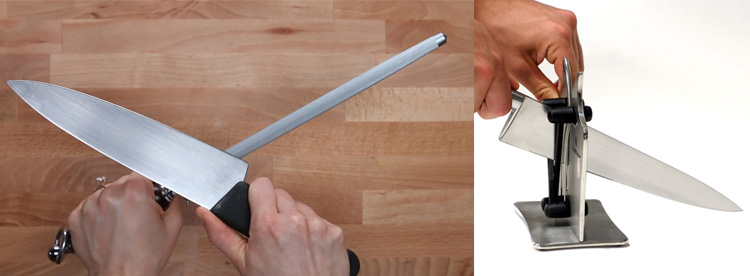
There are multiple ways to remove the steel. Some remind you of cutting a stamp off of the surface of a stone, whereas others involve circle movements. Going back and forth, on the whole length of the stone is one fast and effective way to do it.
Here are some tips when removing the steel:
- Check the angle from time to time, until you get and edge
- Start slow and try to maintain the same angle.
- Make an effort to control your forearm or the wrist rocking as you want to maintain the angle of the blade, while pushing/pulling the knife from one end to the other.
- Hold the angle a bit lower than the final angle so that you compensate for the rocking motion.
- After 5-10 strokes, it’s best to check your work, taking a good look at the edge as you need to decide if you have to remove more steel or not.
- Swap sides and strike 5-10 times on the opposite side of your knife, making sure that you maintain the edge symmetrical.
- You should always have a symmetrical number of strokes for every side, until you obtain the right edge.
- Covering the edge with a permanent marker is a great tip as you get to see where exactly you’re removing steel.
Is it difficult to know when you’ve established the edge?
Knowing it you’ve established an edge or not may be tricky, mostly because sharpening may lead to a small burr on your knife’s edge. Tiny particles of steel that hand on the very edge of the blade are creating the burr.

In the case of a knife’s edge, the tiny pieces of steel may mislead you and make you think that the knife is sharper than it actually is. Once the tiny pieces of steel are going to be removed when you’re using the knife, you get to see that your knife is in fact, dull.
Here are two ways to identify the fine edge that you’re aiming for:
You feel the edge
This is one misleading way to tell if you got your edge on the knife. It’s quite common for one to run the thumb over the edge and think that the knife is sharp, when it’s far from it. This is because of the burr as the small particles do feel sharp, indeed.
You should get rid of the burr and run your blade smoothly over a piece of wood a couple of times. This is going to remove the burrs, but it’s not going to ruin the edge in any way.
You see it
Get yourself a jeweler’s loupe for taking a good look at the edge. You may feel the burr, but you can also see it. The burr should be even along the whole blade.
- Side note: You know your edge is true when you’re not able to notice any light reflecting off of the edge as you’re looking right at the edge. Practice and good light is going to help you on that. Hold your knife with the edge straight up, right under a bright source of light (sunlight is the best), rocking the blade side to side, up and down, trying to notice any reflection.
the light is going to reflect off of flat spots/round spots on the blade. There should be no rounded/flat spots for the light when the two sides of the blade meet in a true point. Your edge isn’t good enough if you there’s any light reflecting off of the blade. The heel and the tip of the blade are typically the missed spots on the knife.
What are the most “popular” mistakes when sharpening the knife for the first time?
Sharpening your knife is easy, sharpening the proper way is about a lot of practice and patience, though.
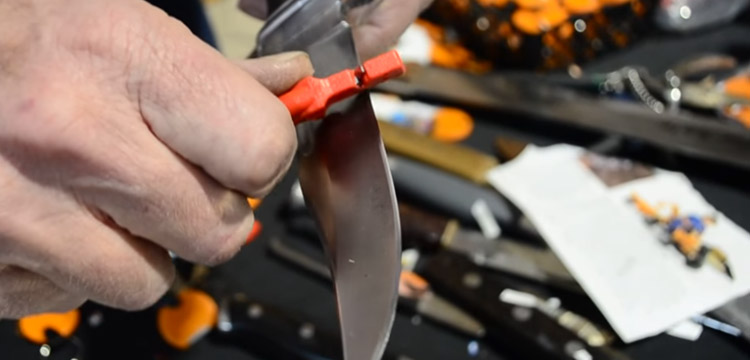
Here are some common mistakes related to the sharpening of a knife:
You see no progress and…you change the technique
This mistake happens when you’re learning to sharpen a knife that is way beyond its use. You begin the sharpening; you don’t notice any progress about the sharpness of the knife so you think it’s a good idea to give it a try with another technique. But this is also going to result into a failure in less than 10 minutes so you decide, once again, to try yet, another method. You should never try to restore an edge that has no chance for that, unless you have no other option. Even so, it’s best that you take a break and wait until you get your strength back.
You may come back to it, but use the same technique and the same angle you had before your time out. If you’re dealing with some hard steel that has worn edges, you may need at least half an hour just to get an edge.
Your knife is way too dull to begin with
When you’re trying to learn how to sharpen knife, you shouldn’t aim for the dullest one in the house. You should get one that looks rather sharp (it may even be a new one). Ask someone that knows how to sharpen knives to do it for you and try to maintain that edge when the knife seems a bit dull. Most new knives don’t even come with a truly sharp edge. It’s best that you practice your sharpening skills on a fairly sharp knife as you’re going to get the chance to notice your real progress a lot faster. It’s also a good way to find out what works and what doesn’t. the moment the blade gets dull, take it to the stone and try working a bit for getting back the edge. It’s easier and more effective to do it on a regular basis and not for hours later in the future.
The angle is too steep
You should think about some aspects when deciding on the angle of your edge:
- Personal preference
- The quality of the steel. Is it able to hold a steep edge?
- What are you using your knife for? Some light slicing or heavy-duty cutting?
You start out on too fine a medium/progress too soon to a finer medium
Sharpening knives and sanding wood are pretty similar. If you have to move plenty of material, you should begin with a coarse grit and move to the finer grit only when you got rid of the steel you need, using the coarse grit. Do due diligence about the different grits.
How to take care of a knife?
It takes a lot of time, skill and patience to get the right edge and you never want to ruin your hard work over some stupid and minor mistake.

Taking care of a knife and edge is easy, but you should bear in mind some things:
- You always need to use your knife for cutting things that are softer than the blade itself. Sometimes, only a slight pressure on something harder than the steel is going to eliminate the edge.
- Don’t use your knife on ceramics, glass, steel, bones, dirt, rock or other knives. Any bump of the blade against any of them is going to ruin the edge immediately.
- Don’t put the knife in a sink, dishwasher, drawer or other place where the edge may come in contact with something harder than its steel.
- Store the knife in its sheath for protecting the edge.
- Don’t cut on top of something harder than the blade itself (granite countertop, glass cutting board or anything else similar).
- Once your knife’s performances decreases, don’t wait. Go to the stone and make sure you get back the edge.
One sharp tip as closure
Some say that sharpening a knife is only 10% tools and an impressive 90% skill. You should make time and get the will and patience for mastering the sharpening free hand with a couple of stones. This way you’re going to be able to sharpen a knife with anything that may work. Don’t wait for a machine to do it for you, as you’re forced to relying on it, even when you don’t have access to it. Once you’re able to sharpen a knife, you’re actually capable to sharpen all sorts of things!
RESOURCES
https://theprepared.com/survival-skills/guides/sharpen-knife/
https://goneoutdoors.com/sharpen-combat-knives-7636618.html


